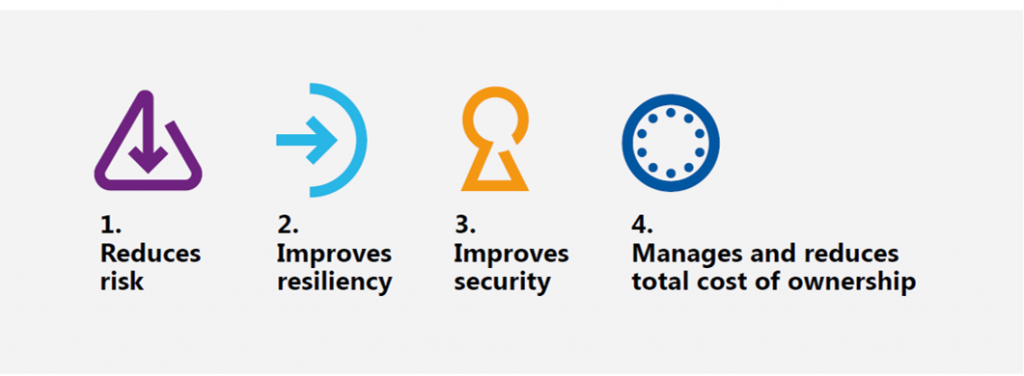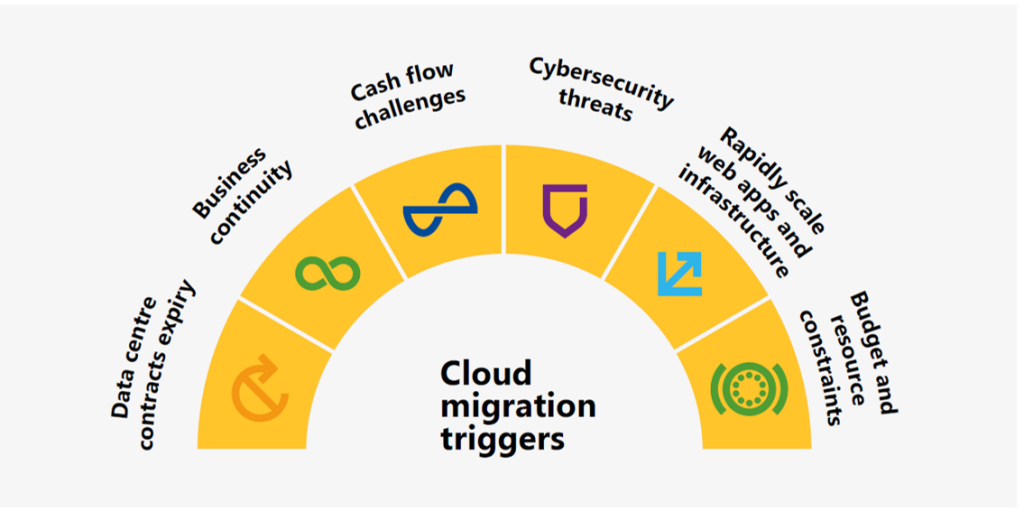Cloud usage is extremely high and by the end of this year it is expected that 83% of enterprise workloads will be in the cloud. The most common cited reasons to move to the cloud include:

When considering moving on-premise assets to the cloud, organisations often look at the like for like features and in that regard, cloud does normally come out in front. However, the real benefits of the cloud exist in the realm of possibility where, for example, you could create a common digital platform that unifies your data, applications and infrastructure in a single cloud platform. With this you create a far more compelling proposition and open up a wide range of capability available to your organisation.
There are a range of flexible migration approaches when you consider a move to the cloud. It can be done at your own pace and if you are not 100% sold on it, you can always consider a hybrid approach to ease into it and assess benefits before full migration, if desired. Hybrid cloud approach is very much still the dominant approach for most organisations.
Cloud migration triggers
The triggers that cause organisations to consider starting their own journey to the cloud can be a wide ranging, but common reasons include the following.

- Data Centres contract expiry – This is mostly driven by servers coming to their end of life. Most organisations aren’t going to move to the cloud fully until this happens.
- Business continuity – The disaster recovery & back up technology available in the cloud as well as the 99% SLA normally provided is better than your on-premise servers can provide with less work.
- Cash flow challenges – The move to online subscriptions vs large upfront investment, can improve cash flow for organisations where they would normally invest in new servers they no longer have to factor in that expenditure.
- Cyber security threats – The cloud has a wide range of new security features and functions. Microsoft alone spends $1bn on security every year.
- Rapidly scale web apps – Flexibility in the capacity and scale you have for your web apps is a great feature available to ensure everyone that needs to access your applications can but you aren’t paying for excess capacity.
- Budget and resource constraints – This links back to the cash flow challenges, organisations have limited budgets and resources, a move to the cloud reduces the total cost of ownership and frees up resources like your IT team to work on projects that benefit your organisation.
Discover our full range of Cloud Migration services and to find out more about how to migrate to the cloud and migrating to the Microsoft cloud, download our Cloud Migration guide here.


